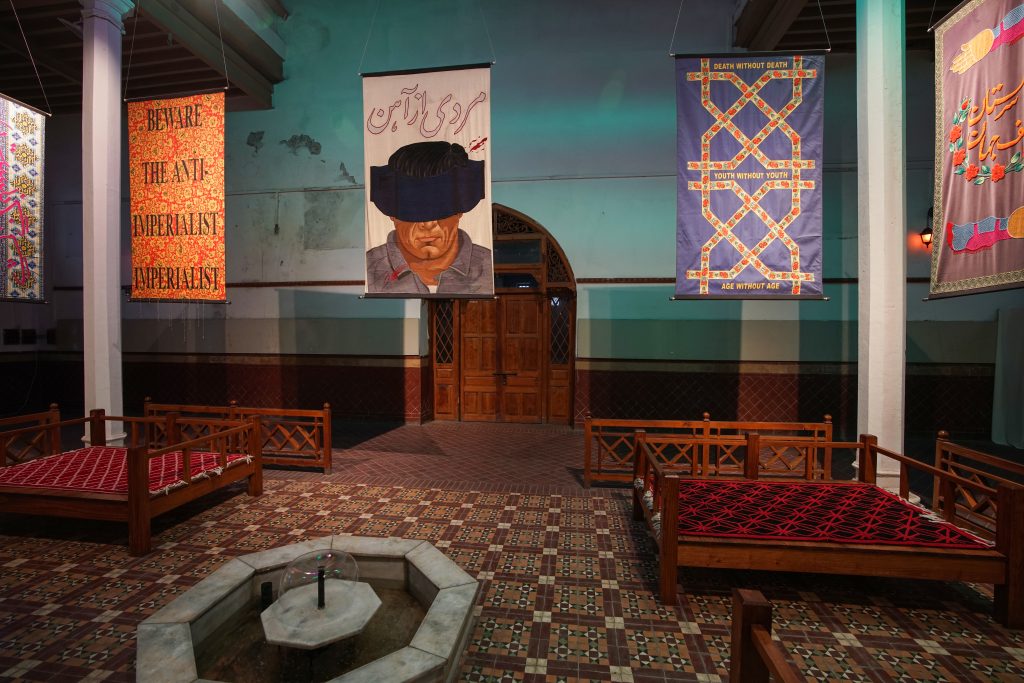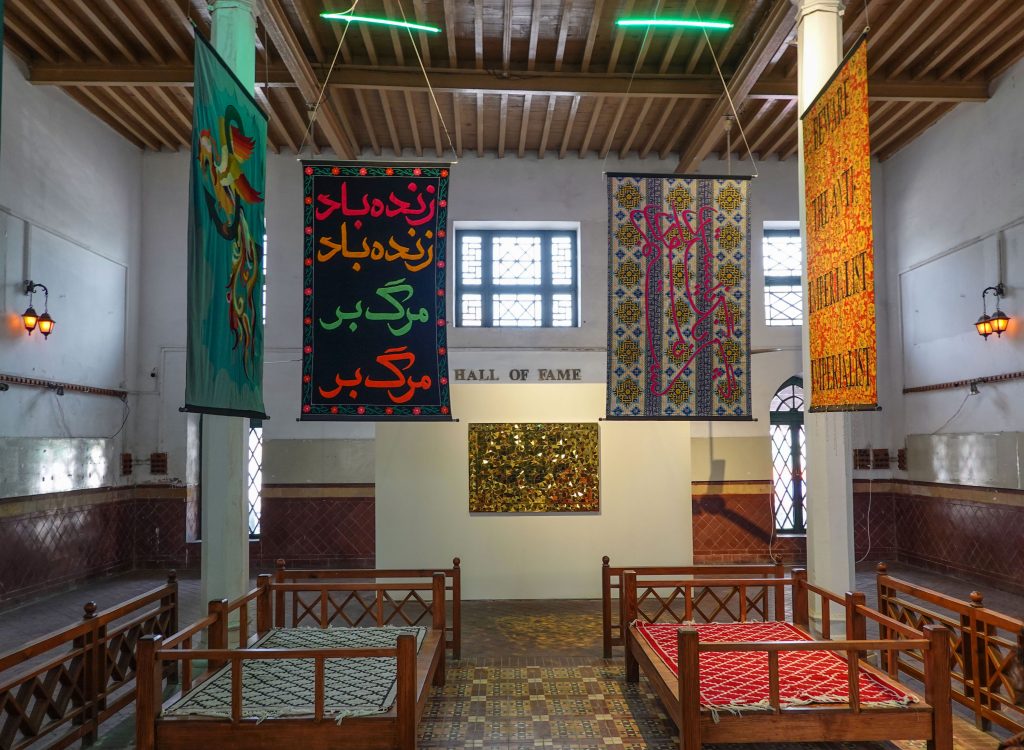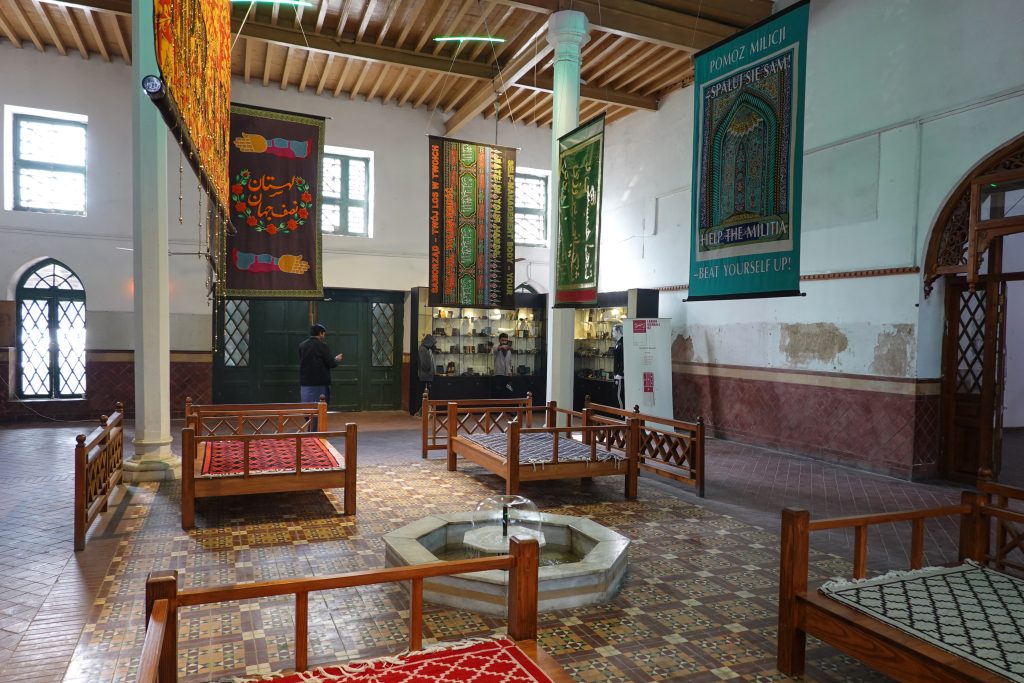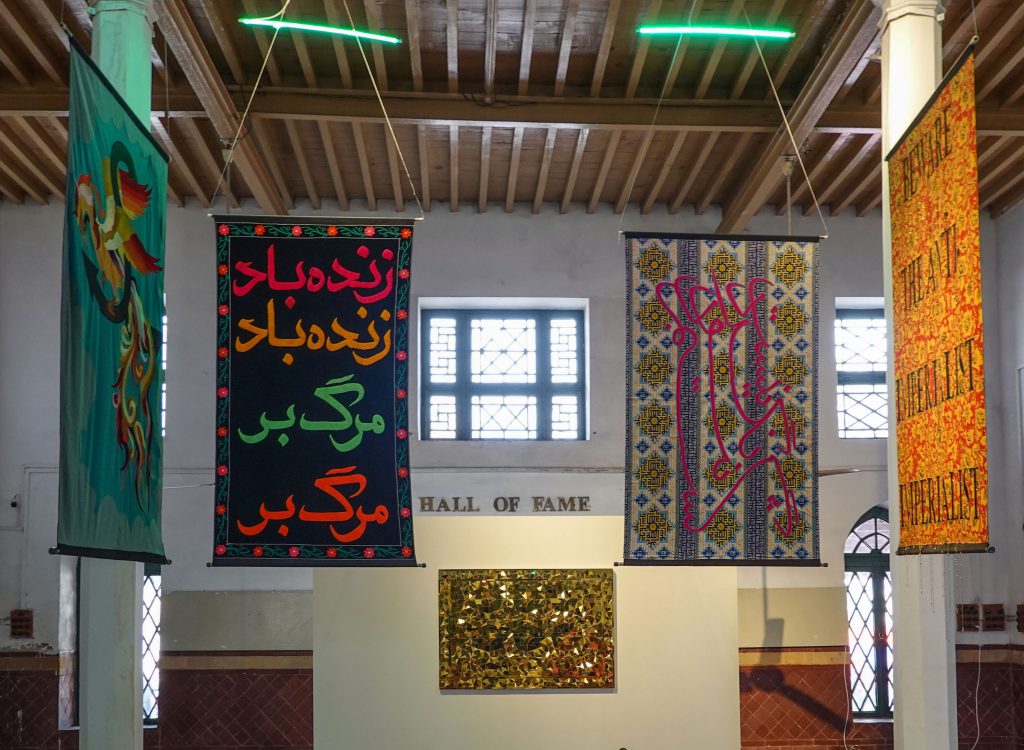Slavs and Tatars
Friendship of Nations, 2011
Installation, sculpture, objects, dimensions variable
Friendship of Nations looks to the revolutionary potential of crafts and folklore behind the ideological impulses of two key modern moments: the Islamic Revolution of 1979 and Poland’s Solidarność in the 1980s. Slavs and Tatars see these moments as bookends to the two major geopolitical narratives of the recent past, the communist project of the 20th and Islamic modernism in the 21st centuries. From 17th century Sarmatism, the dominant ideology amongst the Polish nobility, to monobrows in America and the Green movement in presentday Iran, Friendship of Nations traces an ambitious if unlikely genealogy between Iran and Poland. Slavs and Tatars is a faction of polemics and intimacies devoted to an area east of the former Berlin Wall and west of the Great Wall of China known as Eurasia. The collective’s practice is based on three activities: exhibitions, books and lecture-performances.
سلاو اور تاتر
دو بظاہر مختلف واقعات کے تعلق کی کھوج سے شروع ہوتے ہوئے، جویوں تو الگ الگ ہوئے لیکن بیسویں صدی کے لیے بہت اہم تھے۔ اشتمالیت کا زوال اور ایران کا اس می انق ب۔ قوموں کی دوستی؛ پولینڈ کی شیعہ شوبز نے ایران اور پولینڈ م معاشی، سیاسی، سماجی، مذہبی اورثقافتی کہانیوں م ناقابل ِ یقین قسم کے اجماع کی کھوج لگائی ہے۔
یوریشیا سے جڑی ہوئی قربت اور تکرارکا مجموعہ سلاواور تاتر کا کام کئی رخ میں پھیلا ہوا ہے جن میں ایسی مختلف ثقافتی یادداشتیں شامل ہیں جو وسط ایشیائی باشندوں، سلاوز اور قفقازیوں میں بھولے ہوئے تعلقات کا احاطہ کرتی ہیں ۔ یہ پروجیکٹ ماسکو اور برسلز کے درمیان پھیلی ایسی کہانیوں کو سامنے تا ہے جو جدید ترقی اور مغربیت کی زد میں ہیں ۔
Produced by Sharjah Art Foundation
Photos by Gerardo Martinez, Plamen Galabov
Courtesy Sharjah Art Foundation Collection
Text Sources: Sharjah Art Foundation; Slavs and Tatars




